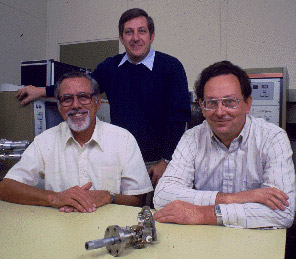STM techniques

Heinrich Rohrer and Gerd K. Binnig, scientists at IBM's Zurich Research Laboratory in Switzerland, are awarded the 1986 Nobel Prize in physics for their work in scanning tunneling microscopy. Binnig and Rohrer were recognized for developing the powerful Scanning Tunneling Microscopy technique. They shared the award with German scientist Ernst Ruska, designer of the first Electron Microscope. STM can form an image of individual atoms on a metal, semiconductor or other conductive sample surface by scanning the tip of a needle over the surface at a height of only a few atomic diameters, so that tunnel current occurs between the tip and the sample.
Main STM techniques are Constant Current and Constant Height modes for "topographic" data acquisition, accomplished by Spectroscopic techniques for "work-function"(barrier height) and "local density of states"(LDOS) profiles acquisition, I(z) and I(V) curves representing chemical and electronic characteristics of surface.
Russell Young and his co-workers Fredric Scire and John Ward (left to right) with the Topografiner. It must be noted however that as long as in 1966 Russell Young has stated idea about an opportunity to acquire the surface topography with usage of current between surface and sharp metallic tip. In 1971 he have published paper about device called Topographiner, which contained all major assemblies of Scanning Probe Microscope.

References
- US Pat. 4343993. IBM. J. Res. Dev. v.30, N4, 355 (1986).
- Phys. Rev. Lett. V. 27, N 14, 1971, P. 922-924. Rev. Sc. Instr. V. 43, N 7, 1972, P. 999-1011.






